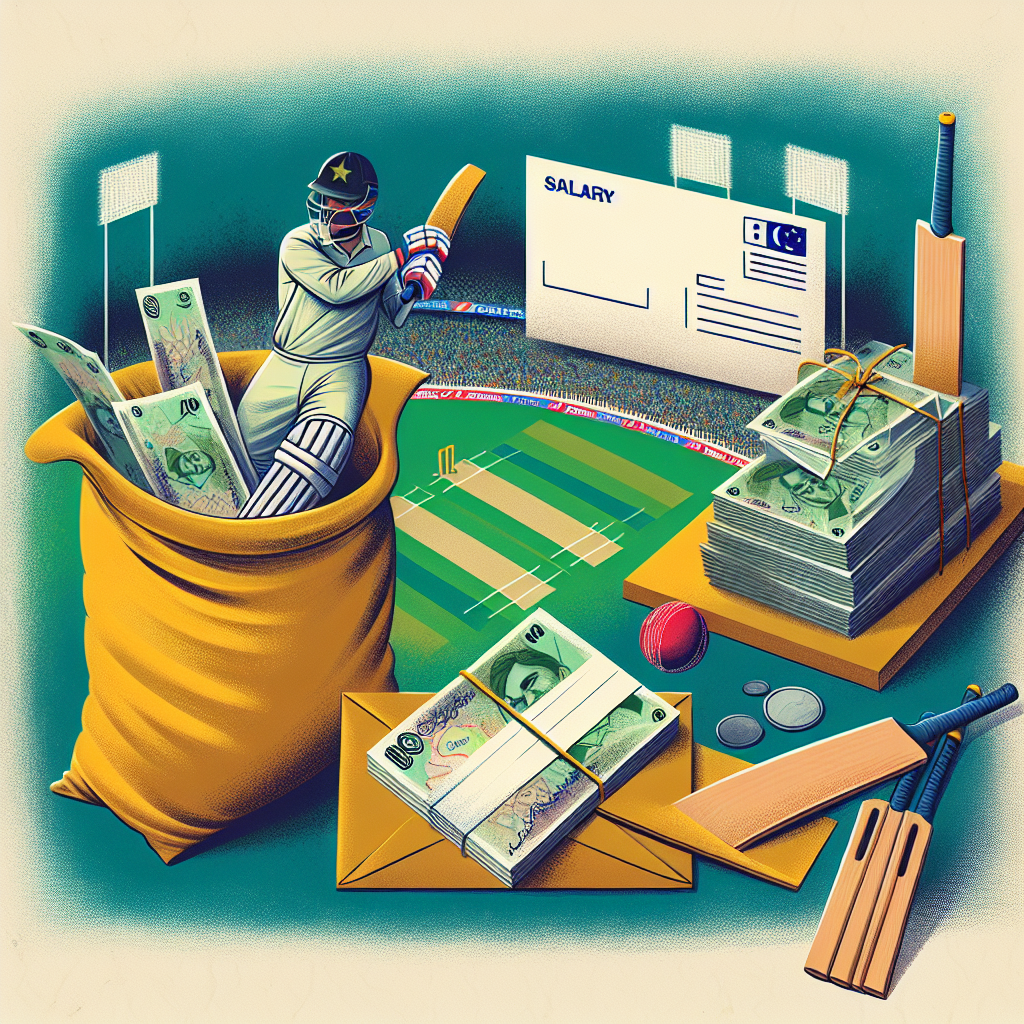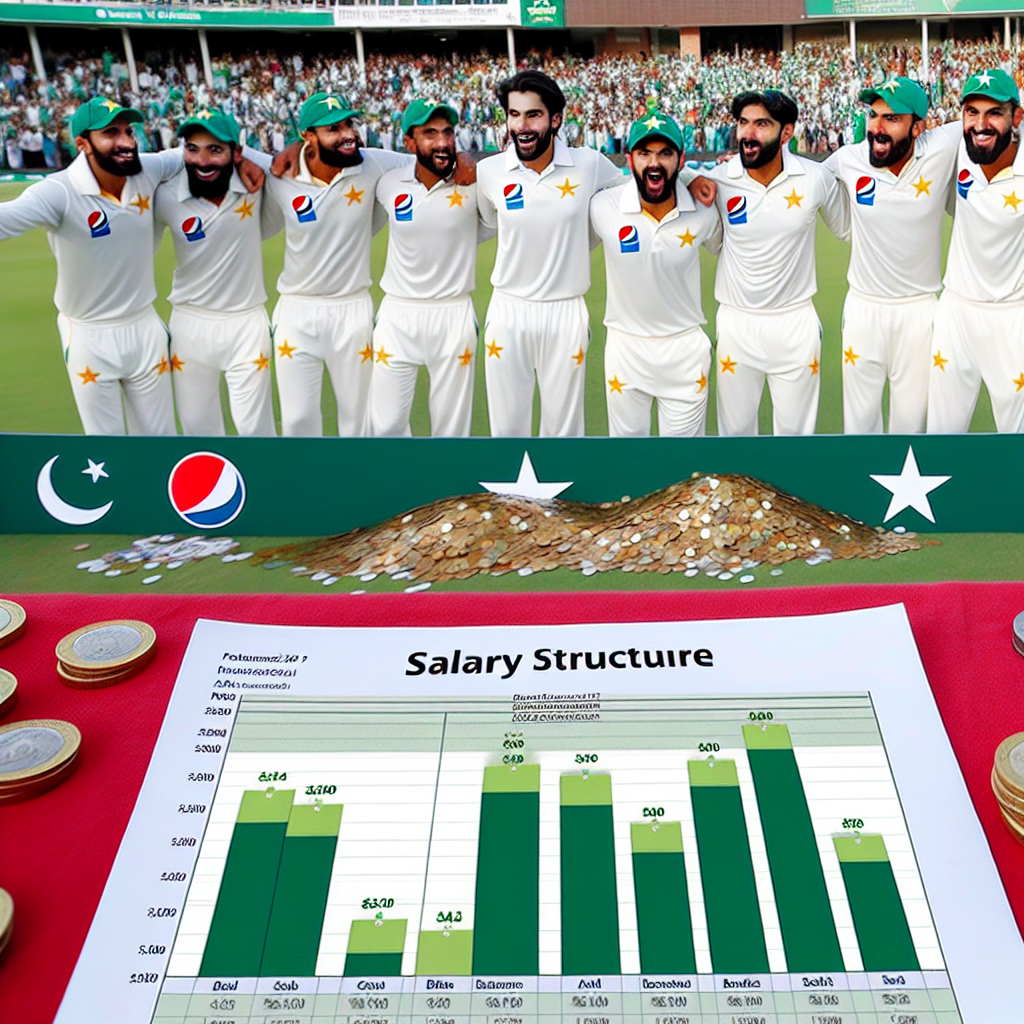Understanding the Salary Structure of Pakistan Cricket Players

Cricket is not just a sport in Pakistan; it is a passion that unites the nation. The Pakistan national cricket team, known for its unpredictable yet thrilling performances, has produced some of the most talented players in the world. However, the financial aspects of being a professional cricketer in Pakistan are often shrouded in mystery. This article delves into the salary structure of Pakistan cricket players, providing insights into how they are compensated for their contributions to the sport.
The Hierarchical Structure of Player Contracts
The Pakistan Cricket Board (PCB) is responsible for managing the contracts and salaries of national players. The PCB categorizes players into different groups based on their performance, experience, and potential. These categories determine the base salary and other financial benefits players receive.
Central Contracts
Central contracts are the primary source of income for national players. The PCB divides these contracts into three main categories:
- Category A: This is the highest tier, reserved for the most experienced and consistently performing players. These players are often the backbone of the team and receive the highest salaries.
- Category B: Players in this category are usually those who have shown promise and have been part of the national team for a significant period. They receive a moderate salary compared to Category A players.
- Category C: This category includes emerging players who have recently made their debut or are on the verge of breaking into the national team. Their salaries are the lowest among the centrally contracted players.
In addition to these categories, the PCB also offers emerging contracts to young players who show potential but are not yet part of the main squad.
Match Fees and Performance Bonuses
Besides the base salary from central contracts, players earn match fees for representing Pakistan in international matches. The match fees vary depending on the format of the game:
- Test Matches: Test cricket is considered the pinnacle of the sport, and players receive the highest match fees for participating in these games.
- One Day Internationals (ODIs): The match fees for ODIs are slightly lower than those for Test matches but still constitute a significant portion of a player’s income.
- T20 Internationals: Given the shorter format, T20 match fees are generally lower than those for Tests and ODIs.
Performance bonuses are another crucial component of a player’s earnings. These bonuses are awarded for exceptional performances, such as scoring a century, taking five wickets in an innings, or achieving a hat-trick. Such incentives motivate players to perform at their best.
Domestic Cricket and Franchise Leagues
While international cricket is the primary focus, domestic cricket also plays a vital role in a player’s career. The PCB organizes various domestic tournaments, and players earn salaries and match fees for participating in these events. The domestic structure includes:
- Quaid-e-Azam Trophy: The premier first-class tournament in Pakistan, offering substantial financial rewards for top performers.
- Pakistan Cup: A List A cricket tournament that provides players with additional income opportunities.
- National T20 Cup: A domestic T20 competition that helps players hone their skills for the international stage.
Franchise leagues, such as the Pakistan Super League (PSL), have become a significant source of income for players. The PSL attracts international talent and offers lucrative contracts to local players. Participation in such leagues not only boosts a player’s earnings but also provides exposure to different playing conditions and styles.
Case Studies: Salaries of Prominent Pakistani Cricketers
To better understand the financial landscape, let’s examine the earnings of some prominent Pakistani cricketers:
Babar Azam
Babar Azam, the captain of the Pakistan cricket team, is one of the highest-paid cricketers in the country. As a Category A player, he receives a substantial base salary. His earnings are further augmented by match fees, performance bonuses, and endorsements. Babar’s participation in the PSL and other international leagues also contributes significantly to his income.
Shaheen Afridi
Shaheen Afridi, a rising star in Pakistani cricket, falls under Category B. His impressive performances in international cricket have earned him a reputation as one of the best fast bowlers in the world. Shaheen’s income is bolstered by match fees, bonuses, and his involvement in franchise leagues like the PSL.
Fakhar Zaman
Fakhar Zaman, known for his explosive batting, is another key player in the national team. As a Category B player, he earns a competitive salary. Fakhar’s participation in domestic and international T20 leagues further enhances his financial standing.
Challenges and Criticisms
Despite the financial rewards, the salary structure of Pakistani cricketers is not without its challenges and criticisms. Some of the key issues include:
- Disparity in Earnings: There is a significant gap between the earnings of top-tier players and those in lower categories. Emerging players often struggle to make a sustainable income.
- Inconsistent Payments: Delays in payments from domestic tournaments and franchise leagues can create financial uncertainty for players.
- Lack of Long-term Security: Cricketers’ careers are often short-lived, and the lack of long-term financial security can be a concern for many players.
Conclusion: The Financial Landscape of Pakistani Cricketers
The salary structure of Pakistan cricket players is a complex system that balances base salaries, match fees, performance bonuses, and earnings from domestic and international leagues. While top-tier players enjoy substantial financial rewards, emerging players face challenges in achieving financial stability. The PCB’s efforts to provide central contracts and organize domestic tournaments are crucial in supporting players’ careers.
As cricket continues to evolve, it is essential for the PCB to address the challenges and ensure fair compensation for all players. By doing so, Pakistan can continue to nurture and retain its cricketing talent, ensuring a bright future for the sport in the country.



